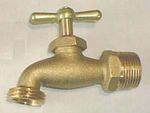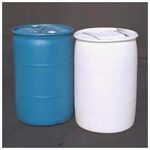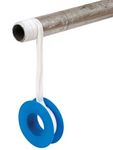Rain Barrel Construction Workshop - City of Norman, OK
←
→
Page content transcription
If your browser does not render page correctly, please read the page content below
Rain Barrel Construction Workshop
Why harvest rain?
In a state with weather like Oklahoma, we all realize that water is a precious resource in need
of conservation. As a matter of fact, Oklahoma is currently revising the Oklahoma
Comprehensive Water Plan to guide water management for the next 50 years.
Harvesting rain water is simply collecting and storing rain water from impervious surfaces (like
rooftops) that would otherwise run off to local streams. Harvested rain water can be used to
water lawns and gardens, wash cars or for other similar uses. Using potable water (water
suitable for drinking or cooking) for these applications is a waste of an important resource that
is in ever‐increasing demand.
Harvesting rain water also helps to address storm water pollution. Rain is relatively clean when
it falls but it picks up pollutants as it flows across parking lots, streets and other areas. Storm
water flows into drains and eventually into streams and ponds. Collecting and storing rain
helps to decrease both the volume and rate of storm water runoff.
Rain from your rooftop
Almost all the rain that falls on your rooftop runs off onto the landscape from valleys or gutters
and downspouts. Discounting evaporation and leakage, and assuming a horizontal surface, just
1/10 of an inch of rain on a 1000 square foot roof produces about 62 gallons of water! In
Norman, our average annual precipitation of about 38 inches produces almost 24,000 gallons of
water from that same 1000 square foot roof every year!
Rain barrel construction
Although you can also purchase them ready‐made from many garden supply catalogs, making
your own rain barrels is an easy and inexpensive way to harvest rain from your roof. To make
your own, you will need:
Barrel. Used or surplus barrels are
available from many sources. However,
you want to be sure to use plastic food‐
grade barrels and not ones that
contained chemicals or fuels. Locally, we
have found Big Ed’s Surplus in Okarche to
be a great source for 30, 55 and 60 gallon
barrels (405‐263‐4700).
Water inflow. In general, you have two
options to get water into your barrels.
o If you are harvesting water from a roof
valley, you can remove the barrel top
completely and replace it with a screen. Window screen (available at any hardware
store) works well. You will need to anchor the screen to the barrel either using the
barrel ring (if available) with a hook and eye, or with a bungee cord or similar device.
City of Norman
Environmental Control Advisory BoardRain Barrel Construction Workshop
o If you are harvesting water from a downspout, you will need to cut a 4 inch (or
whatever diameter works) hole in the top of the barrel and place a louvered grate in
the hole (available at any hardware store). The downspout will need to be cut at the
appropriate height, so that water will flow into that hole. Replacing the elbow at the
new elevation will help direct water to your barrel.
Overflow. It is very important that you drill a hole in the
side of the barrel near the top as an overflow – once it fills
you want to have control over the excess water. This hole
can be tapped with a hose fitting (be sure to use thread seal
tape) so you can direct the overflow through a hose into
another barrel in series, a specific garden area or even a
pond.
Water outflow. For regular use of the harvested rain
water, you will need a spigot or hose bibb near the
bottom. Although you can tap the hole or use PVC
fittings, brass hose bibbs will self‐thread into plastic
barrels (be sure to use thread seal tape). Be sure to
use one to which your garden hose will readily attach.
Optional hinges. If you are harvesting water from a downspout, you can also cut half
the remaining barrel top away and hinge it to provide access for a watering can. This set
up allows multiple points of access to the water depending on your needs.
Barrel placement and elevation. Water flows down‐gradient so to have a truly
sustainable set up (and not use a pump!), your barrel will need to be elevated. The area
where the barrel is to be placed first needs to be leveled and clear of debris. A barrel on
two 8 inch concrete blocks typically provides enough elevation to allow water to flow
through a standard garden hose. Slope the blocks slightly away from the house and be
sure barrel will be stable once it fills with water. A single large landscape paver placed
on top of the blocks may help. A full 60‐gallon rain barrel will weigh over 500 pounds
and you do not want it to accidentally tip over.
Reminders on Operation and Maintenance
City of Norman
Environmental Control Advisory BoardRain Barrel Construction Workshop
Once established, your rain barrels require limited maintenance. Following are a few pointers
to maintain their function and aesthetics.
Check the level, elevation and stability of your barrels on a regular basis. You do not
want them to be easily tipped over or to spill during a rain event.
Food‐grade barrels are typically white or blue. You may wish to paint them to better fit
the aesthetics of your home and landscape. Spray paint which has been specifically
designed for plastic should be used. Be aware that the paint may chip if you try to move
a full barrel or if you happen to bump it.
Mosquitoes are a potential problem any time water that is stored for a lengthy period of
time. Be diligent in adding ¼ of a solid BT‐based mosquito dunk to your barrels on a
monthly basis during the warmer times of year. BT stands for Bacillus thuringiensis, a
bacterium that kills mosquito larvae before they can become adults. It has been found
to be safe for all mammals, birds and fish.
Web links
Like any web link – please use caution. None of these sources have been contacted nor has the
information been verified.
http://www.rain‐barrel.net/
http://www.harvesth2o.com/
http://rainwaterharvesting.tamu.edu/
City of Norman
Environmental Control Advisory BoardRain Barrel Construction Workshop
http://www.watershedactivities.com/projects/spring/rainbarl.html
http://www.youtube.com/watch?v=MGFDlkJOdaM
http://www.dnr.state.md.us/ed/rainbarrel.html
www.mde.state.md.us/assets/document/water_cons/rainbarrel.pdf
http://www.swfwmd.state.fl.us/conservation/rainbarrel/make‐a‐rain‐barrel.html
http://www.younghouselove.com/2009/03/how‐to‐make‐a‐rain‐barrel/
http://www.diynetwork.com/how‐to/how‐to‐build‐a‐rainbarrel‐platform/index.html
http://www.instructables.com/id/Need‐Free‐Water%3F‐‐Build‐a‐Rain‐Barrel/
http://home.comcast.net/~leavesdance/rainbarrels/construction.html
http://www.marc.org/environment/Water/buildrainbarrel.htm
www.portlandonline.com/shared/cfm/image.cfm?id=182095
www.epa.gov/region3/p2/make‐rainbarrel.pdf
http://www.cityofbremerton.com/content/sw_makeyourownrainbarrel.html
http://www.hgtv.com/landscaping/rain‐barrels/index.html
Parts List
All barrels will need: Downspout Open barrel for valley
1. Spigot Barrels connected to a Barrels placed under a roof
2. Teflon Tape downspout will also need: valley will also need:
3. Overflow Pipe (with 1. Louvered grate 1. Screen
optional hose fitting) 2. Hinges (if desired-to 2. barrel ring or bungee
4. BT-based mosquito provide access for cord
dunk watering can)
5. Platform to elevate
(concrete blocks)
NOTES
City of Norman
Environmental Control Advisory BoardYou can also read

























































